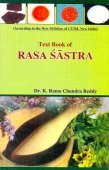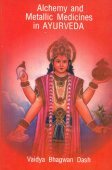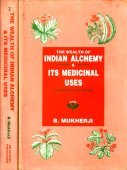Caraka-samhita, Caraka-saṃhitā: 3 definitions
Introduction:
Caraka-samhita means something in Hinduism, Sanskrit. If you want to know the exact meaning, history, etymology or English translation of this term then check out the descriptions on this page. Add your comment or reference to a book if you want to contribute to this summary article.
Alternative spellings of this word include Charakasamhita.
In Hinduism
Ayurveda (science of life)
Dietetics and Culinary Art (such as household cooking)
Source: Shodhganga: Dietetics and culinary art in ancient and medieval IndiaCarakasaṃhitā (चरकसंहिता) enjoys the prime position among Ayurvedic treatises. The text is written in the form of advices of the sage Ātreya to the sage Agniveśa. It is believed that Caraka edited these discussions around 3rd century CE which became popular by the name Carakasaṃhitā.
The text contains eight sections viz.—
- śūtrasthāna,
- nidānasthāna,
- vimānasthāna,
- śarīrasthāna,
- indriyasthāna,
- cikitsāsthāna,
- kalpasthāna,
- siddhisthāna.
Sūtrasthāna contains 30 chapters. Of them the first 28 chapters are divided into seven subsections namely catuṣakas viz. bheṣajacatuṣka, svāsthyacatuṣka, niraddeśacatuṣka, upakalpanācatuṣka, rogacatuṣka, yojanācatuṣka and annapānacatuṣka.

Āyurveda (आयुर्वेद, ayurveda) is a branch of Indian science dealing with medicine, herbalism, taxology, anatomy, surgery, alchemy and related topics. Traditional practice of Āyurveda in ancient India dates back to at least the first millenium BC. Literature is commonly written in Sanskrit using various poetic metres.
General definition (in Hinduism)
Source: WikiPedia: HinduismCaraka Saṃhitā (चरक संहिता): An ancient Indian Ayurvedic text on internal medicine written by Caraka. It is believed to be the oldest of the three ancient treatises of Ayurveda.
Languages of India and abroad
Sanskrit dictionary
Source: Cologne Digital Sanskrit Dictionaries: Aufrecht Catalogus Catalogorum1) Carakasaṃhitā (चरकसंहिता) as mentioned in Aufrecht’s Catalogus Catalogorum:—med. by Śaraka. Io. 335. 359 (cikitsāsthāna). 1445 (indriyasthāna and rasavimānasthāna). 1535 (madanakalpa till uttarasiddhi). Cambr. 21 (3 first books). K. 212. B. 4, 222. Ben. 64. Bik. 635. Kāṭm. 12. Pheh. 2. Oudh. Xiv, 108. Xv, 140. Np. I, 16. V, 194. Bhr. 368. Proceed. Asb. 1865, 139. Oppert. Ii, 8210. Carakasūtra B. 4, 122. Report. Xxxvi. Bühler 558.
—[commentary] Np. V, 32.
—[commentary] by Agniveśa. Sb. 284.
—[commentary] by Kṛṣṇa Vaidya. Quoted Oxf. 318^a.
—[commentary] Carakatātparyadīpikā by Cakrapāṇidatta. L. 2160. Np. V, 194.
—[commentary] by Haricandra. Quoted Oxf. 187^b.
2) Carakasaṃhitā (चरकसंहिता):—Carakasū0tra. read B. 4, 222.
3) Carakasaṃhitā (चरकसंहिता):—med. [Bhau Dāji Memorial] 114. Io. 335 (1-5). 359 (cikitsāsthāna). 881 (2-5). 1445 (indriyasthāna and vimānasthāna). 1335 (7. 8). 1935 ([fragmentary] of the sūtrasthāna). Stein 182.
4) Carakasaṃhitā (चरकसंहिता):—med. by Caraka. Ulwar 1624. 1625 (Sūtrasthāna).
5) Carakasaṃhitā (चरकसंहिता):—med. Ak 925 (inc.). As p. 62 (Sūtrasthāna, and Pañcakarmādhikāra the first 11 chapters of the Siddhisthāna). Śg. 1, 183 p. 159 (inc.). Tb. 141. 142 (1-4. 6-8). 143 ([fragmentary]) 144 (5 and fragments of 3 and 5). 152 ([fragmentary]). C. Tātparyadīpikā by Cakrapāṇidatta. Tb. 145 (1-3). 146 (1, 13 up the end of the work).
Sanskrit, also spelled संस्कृतम् (saṃskṛtam), is an ancient language of India commonly seen as the grandmother of the Indo-European language family (even English!). Closely allied with Prakrit and Pali, Sanskrit is more exhaustive in both grammar and terms and has the most extensive collection of literature in the world, greatly surpassing its sister-languages Greek and Latin.
See also (Relevant definitions)
Partial matches: De, Te, Samhita, Caraka.
Query error!
Full-text (+2286): Caraka, Leprosy, Samutthana, Varyovida, Medaka, Lelitaka, Pottali, Payasya, Shodhana, Parikartika, Kleda, Parpataka, Peya, Pakva, Krauncadana, Matsyandika, Apasmara, Munjataka, Vatashonita, Udvartana.
Relevant text
Search found 64 books and stories containing Caraka-samhita, Caraka-saṃhitā, Carakasaṃhitā, Carakasamhita, De caraka samhita, The caraka samhita; (plurals include: samhitas, saṃhitās, Carakasaṃhitās, Carakasamhitas, De caraka samhitas, The caraka samhitas). You can also click to the full overview containing English textual excerpts. Below are direct links for the most relevant articles:
History of Indian Medicine (and Ayurveda) (by Shree Gulabkunverba Ayurvedic Society)
Chapter 4 - The Use of Wine < [Part 4 - Some Aspects of Life in Caraka’s Times]
Chapter 4 - The Story of Atreya < [Part 1 - The History of Medicine in India]
Chapter 5 - The Story of Agnivesha < [Part 1 - The History of Medicine in India]
Atharvaveda and Charaka Samhita (by Laxmi Maji)
Caraka (Āyurveda scholar) < [Chapter 1 - Introduction]
1b. Study of Fever (Jvara) in the Caraka-Saṃhita < [Chapter 5 - Diseases and Remedies in Atharvaveda and Caraka-Saṃhitā]
Apasmāra (epilepsy) according to Caraka < [Chapter 4 - Diseases and Remedial measures (described in Caraka-saṃhitā)]
Influence of Nyaya-Vaisesika on Ayurveda (by Sindhu K. K.)
16. Ayurveda and Sangraha period (period of Epitoms) < [Chapter 1 - Origin and Development of Nyaya-Vaisesika and Ayurveda]
17. The Caraka Samhita < [Chapter 1 - Origin and Development of Nyaya-Vaisesika and Ayurveda]
4. Atmavidya (the science of Soul) < [Chapter 1 - Origin and Development of Nyaya-Vaisesika and Ayurveda]
World Journal of Pharmaceutical Research
Translation methods by Ariyadasa Kumarasinghe for Caraka Samhita. < [2021: Volume 10, February issue 2]
Study of variant readings in Charaka Samhita commentaries. < [2020: Volume 9, June issue 6]
Survey on gramya ahara-vihara in relation to madhumeha < [2018: Volume 7, June issue 11]
God doesn't play dice: From labs to Himalayan valleys. < [Volume 35 (issue 1), Jul-Sep 2015]
Theoretical Foundations of Ancient Indian Medicine: Caraka Samhita < [Volume 7 (issue 2), Oct-Dec 1987]
On the identity of ‘kumbhika’ of astanga-hrdaya: (uttara 8/6) < [Volume 4 (issue 4), Apr-Jun 1985]
International Ayurvedic Medical Journal
A comprehensive study of pranavaha srotas with special ref-erence to modern science < [2023, Issue 11. November]
Conceptual study on understanding the effect of gunas of pitta dosha in manifesting different diseases < [2023, Issue 10. October]
Implementation of the principle 'samānaguṇābhyāso hi dhātūnām vṛddhikāraṇam' in asthi- kṣaya < [2016, Issue VIII August]
Related products



